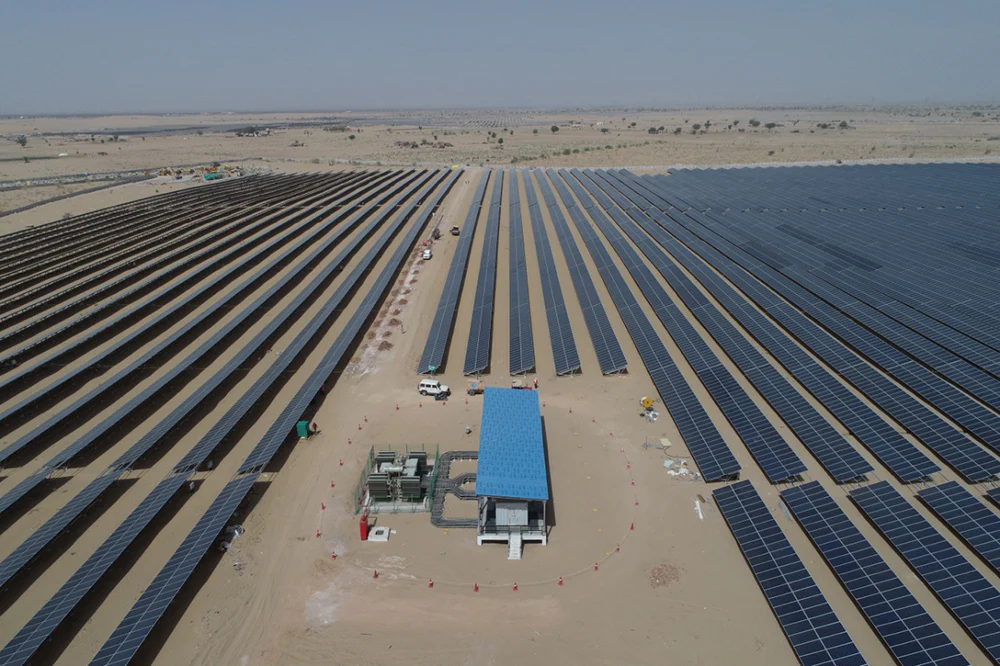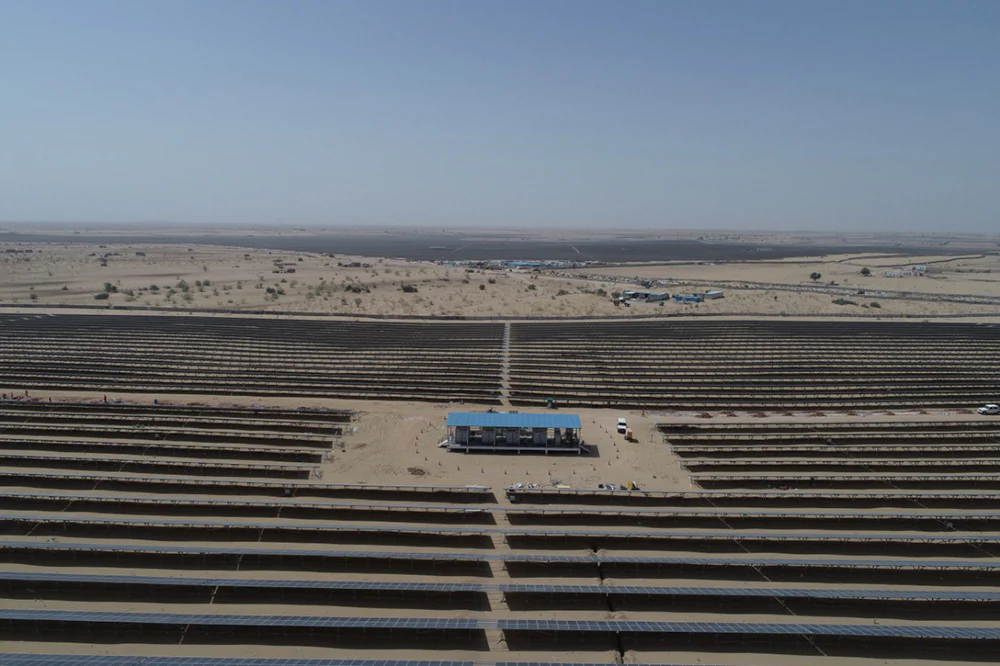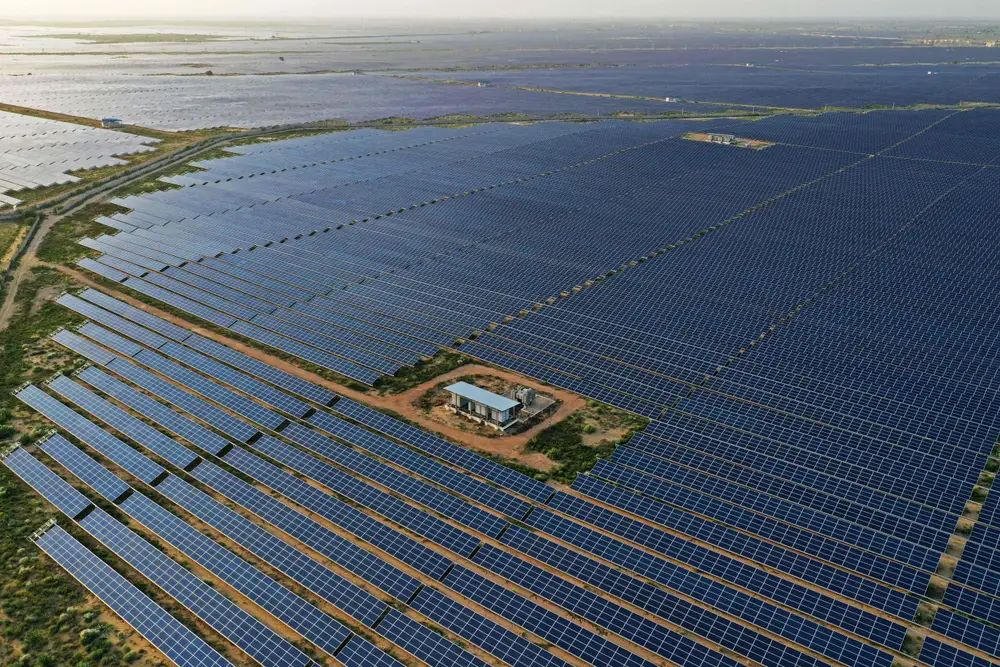- green-spots
- energy
- India
- Solar power project at Bhadla, India

Problems
India’s energy needs are rapidly increasing, with growth in electricity and energy demand among the highest in the world. Although there has been progress in renewable energy generation, 74% of electricity in India still comes from coal. There needs to be a rapid transition towards clean energy, of which solar is particularly important in India, which has the third-largest solar market in the world. Scorching temperatures, infertile soils, limited water supplies, and frequent wind storms make the Phalodi township in India’s Thar desert an inhospitable place to live. Yet the abundance of open space and sunshine make this remote part of western Rajasthan an ideal place for harvesting solar power.
Solutions
Solar power project at Bhadla
Author: Blackridge Research
India has been making great strides in renewable energy, and the Bhadla Solar Power Plant is the largest solar shining example of this progress. With an installed capacity of 2,245 MW, it farms in the country and the world. Thanks to its impressive size, the Bhadla Solar Power Plant can produce enough electricity to power over 1.3 million homes. In addition, the plant has helped to create nearly 25,000 jobs, both direct and indirect. The park has also improved the quality and reliability of electricity supply in the region. The park has also reduced the dependence on fossil fuels and avoided about 4 million tons of carbon dioxide emissions per year. The Bhadla Solar Power Plant is a vital part of India's commitment to reducing its carbon footprint and combating climate change. With this remarkable initiative, the country is now listed as one of the largest solar energy producers by the US-based Institute for Energy Economics and Financial Analysis (IEEFA) in its solar market power-plant-market report). The project activity reduces anthropogenic emissions of greenhouse gases estimated to be approximately 694,471 tCO2e per year, thereby replacing 732,874 MWh/year of electricity with renewable energy. The project diversifies the mix of power plants connected to the INDIAN GRID, mainly dominated by thermal/fossil-fuel-based power plants. The plant was built at the cost of INR. 14,000 crores and was completed in just 18 months. The plant has been acclaimed as an engineering marvel and testimony to India's national solar mission or commitment to clean energy. The Bhadla Solar Park project is being developed under the Ministry of New & Renewable Energy (MNRE) scheme for developing solar parks and ultra-mega solar power projects. It aligns with the Rajasthan Solar Energy Policy 2011 and is considered one of the most important commissioned solar projects in Rajasthan. Location. The state government of Rajasthan has led the construction of a renewable energy project, Bhadla Solar Park, that was executed in four phases. Rajasthan Solar Park Development Company Limited (RSPDCL) developed the project's first two phases, with Saurya Urja Company of Rajasthan taking on phase three and Adani Enterprises Renewable Energy Park Rajasthan constructing phase four. The Bhadla Solar Park had a total value of USD 1.4 billion. The solar power projects' developers are assigned by the National Thermal Power Corporation (NTPC) and the Solar Energy Corporation of India (SECI). Together with developers, the two institutions have inked a 25-year power purchase deal. The construction started in July 2015 and was completed in 2020. The solar plant started operations in 2021 and is now fully operational.
Gallery
4Timelines
2022
The government of India committed to producing 100 gigawatts of solar power, enough energy to electrify 75 million households.
2021
The Bhadla Solar Park, one of the largest solar parks in the world became fully operational and it has been helping India lessen its reliance on fossil fuels.
2020
Phase three and four of the Park was completed, and each comprised of 10 solar power plants with combined capacity of 1,000 MW and 500 MW. Some of the companies that participated in this construction were Hero Future Energies, Softbank Group, and Avada Power.
2018
Ecoppia inked a deal with SB Energy to deploy 2,000 robotic solar panel cleaning machines across five locations in stages three and four.
2015
The park's first phase started and was completed in 2018. On completion, the solar installation reached a total capacity of 75 MW


